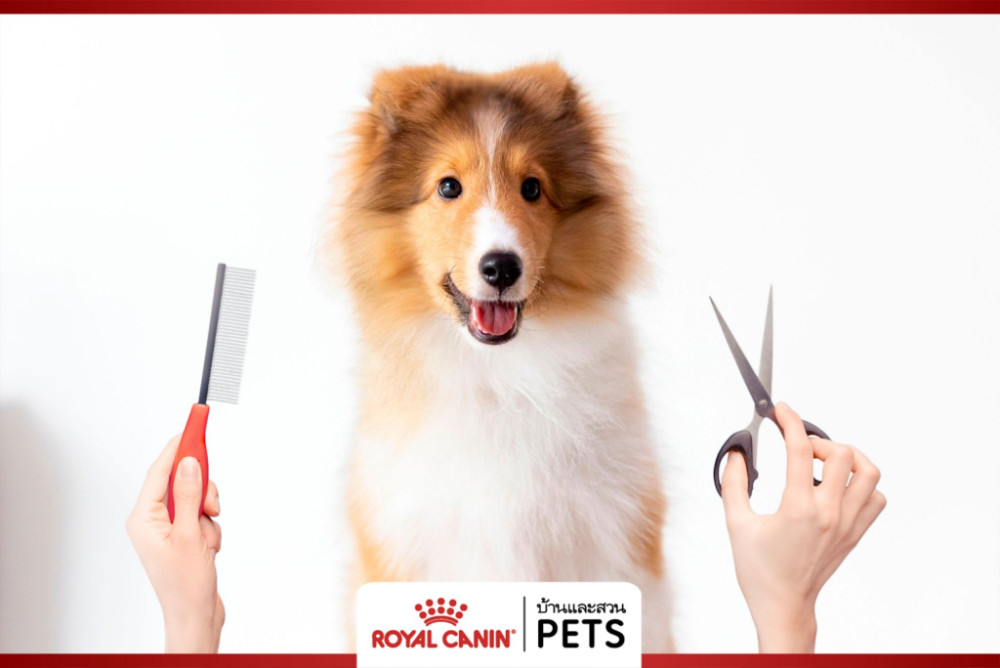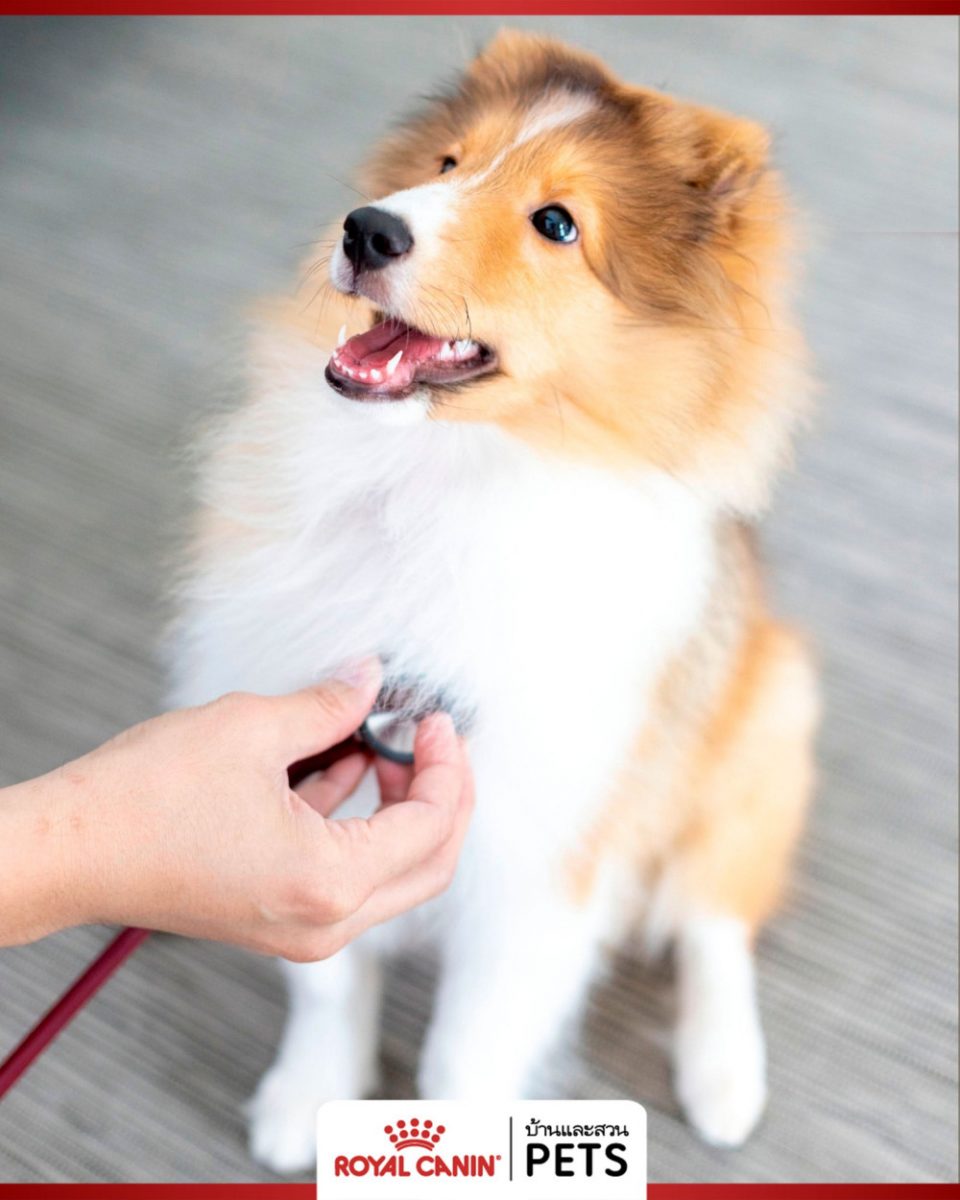Dogs at different ages have different health care and nutritional needs based on their age, body size, breed, and daily routine. How to take care of your dog’s health
Infancy Early Childhood – 1 month Early Childhood Puppies will still be invisible and unable to hear. but perceives things by touch and smell Puppies will start to open their eyes at about 10-14 days of age. During this age, a puppy’s basic needs are only sleeping. Crying when hungry and excreting is an age that requires special care because puppies do not have immunity in the body and their bodies are not yet fully grown. The key nutrients for newborn puppies are “Colostrum from a mother dog” or Colostrum (Colostrum). The mother dog’s body is produced during the first 1-3 days after birth. Puppies should receive colostrum from the mother dog within the first 1-3 days after birth. Colostrum is a higher protein milk than regular milk and contains various vitamins, which is a complete source of nutrients and the main source of immunity for newborn puppies. It will help strengthen the puppy’s body to be stronger. How to take care of your dog’s health
If the mother dog does not have milk or does not have enough milk. Owners should supervise puppies during this period by feeding them the amount of milk they need. Use a bottle designed specifically for puppies. Or use a small syringe to gently feed. Do not push the milk too quickly as this may cause the puppy to choke on the milk into the lungs. After feeding the milk to stimulate the excretion, use a clean cotton swab moistened with warm water, squeeze the damp cloth, wipe the abdomen. around the buttocks and around the genitals including taking care of cleanliness and keep the temperature in the area where the puppy stays to be around 29.5 to 32°C.
This is a period that requires special nourishment for the mother dog. Choose a high-energy food such as Royal Canin STARTER Mother & Babydog from 6 weeks of gestation to lactation. so that he has enough energy to produce milk
When puppies reach 1 month of age after weaning, they may start to change their diet instead of milk with Starter Mousse, which has a fine texture, easy to digest, and then gradually begins to adjust to a pellet diet. Because puppies generally mimic their mother’s diet, Starter formulas are designed to meet the specific needs of puppies. It also helps to promote eating behaviors as well. Because food pellets are designed to absorb water easily. Can be adjusted to semi-liquid food By mixing clean water with soft food pellets to make it easier for the puppy to eat. Divide to eat 3-5 meals a day because during this age, the body changes and the development is rapid.

2-4 months of ageDuring this period, the immunity received from the mother begins to decline. At the same time, the puppy’s self-made immunity is not high enough. Therefore, puppies should be taken for health checks, deworming and vaccination. The first dose should be started at approximately 6-8 weeks of age and the next dose is 2-4 weeks after the first dose and should be revaccinated. every year or as recommended by your veterinarian Vaccination will help build immunity and prevent disease in puppies. And should take care of the puppy’s cleanliness regularly. Owners may start bathing their puppies over 2 months of age as their bodies begin to develop. In addition to vaccination We should choose foods that help boost immunity for puppies. Food selection at this age should be chosen to be suitable for the development of the body according to the age range, body size, species and daily activities. and must be nutritious Contains the necessary amount of nutrients for puppies to grow up to their full age.

Introducing Royal Canin MINI INDOOR PUPPY puppy food for small breed puppies for indoor use. Suitable for ages 2-10 months. This formula helps strengthen immunity. with a group of antioxidants Including vitamin E, vitamin C, taurine, lutein, beta-carotene. Helps keep the digestive system safe. High quality, easily digestible protein (LIP), easily digestible carbohydrates. and proper dietary fiber Helps to adjust the stool to be a good lump Reduce the smell and the amount of feces. and provide high energy suitable for the growth of the body And help keep the coat and skin healthy with the omega-3 fatty acids Eicosapentaenoic acid (EPA) and Docosahexanoic acid (DHA).

Childhood 4 – 12 months . During this period, growth and development are growing rapidly. No matter what size or breed Including changes in the body of the puppy will be more evident. It is the last stage of puppy development before entering adulthood. Growing up into an adult dog will vary depending on the breed and body size. Dogs of larger sizes or breeds take more time to grow than smaller dogs. Can be divided into 5 sizes:
- Miniature breeds such as Chihuahua, Toy Poodle, Pomeranian or having an adult weight of less than 4 kg, usually enters into adulthood at the age of 10 months-8 years
- Small breeds such as Shetland Sheepdogs, Pugs, Mini Schnauzers, or weigh 5 to 10 kg at adulthood, reaching adulthood at the age of 10 months-8 years.
- Medium-sized breeds such as Shiba Inu, Thai Bang Kaew, Boxer, or weigh when they reach adulthood 11-25 kg, enter adulthood at the age of 12 months – 7 years.
- Large breeds such as Golden Retrievers, Giants and Alaskan Malamutes, German Shepherds, or weighing at the time of adulthood 26 – 44kg kilograms, entering adulthood at the age of 15 months – 5 years
- Giant breeds such as the Great Dane, Newfoundland, Tibetan Mastiff, or weigh 45 kg or more at adulthood. Entering adulthood at the age of 18/24 months – 5 years

Although large breeds and giant breeds take longer to reach adulthood than smaller breeds, However, smaller breeds have higher nutritional requirements than larger breeds because they are more active than larger breeds, resulting in a higher metabolic rate. The nutrients that are needed are primarily focused on energy and protein. Puppies at this stage need more calcium in their diets than adult dogs for their physical growth. And during the building of muscles and other tissues of the body can be seen from the increase in body weight.

The adult period, aged 1-8 years, is the period when the dog is fully grown. When dogs enter adulthood, the traits of the breed are clearly visible. and will begin to show breed-specific habits At this age, the metabolic rate is lower than the puppy’s age.
Movement and the need to do activities will begin to decrease.
Should take the dog to exercise regularly. At this age, adjust eating from 3-4 meals a day to eating 2 meals a day. Appropriate food must be nutritious food that is balanced to provide proper energy. Owners should be careful not to make the dog too fat. During this age, diseases to be careful of are often contagious. from parasites such as ticks, fleas or mosquitoes, as well as infectious diseases such as bacteria or viruses, especially serious diseases such as rabies that still has an epidemic in Thailand Repeated booster vaccinations yearly can help reduce the severity of certain infectious diseases, such as measles or enteritis. In addition, owners should regularly deworm their dogs every 3 months.

Seniors, aged about 8 years and over Small breed dogs enter maturity later than large breeds. In medium breeds it enters maturity at around 7 years of age, but large breeds enter maturity at around 5 years of age. because the body will begin to deteriorate Most of the illnesses encountered are joint problems, eyesight, and a weakened immune system. Joint problems can be caused by both being overweight. Cataracts are caused by age-related deterioration of the lens or It could be a sign of diabetes. And may be caused by heredity as well. Owners should take their dogs for check-ups every 6 months. Getting them to do light but regular exercise, such as swimming, walking, or light jogging, will help build muscle and immunity. At this age, there is a decrease in appetite. may have anorexia Because as the age increases each day, the activities of the dog will decrease. As a result, the amount of calories needed per day will be reduced accordingly. and slower metabolism Older dogs are at higher risk of obesity. Therefore, dogs should be given food that is appropriate for their age. There are enough antioxidants in the diet. To help slow down the deterioration of the body, make the body strong and have a long life.
You can buy Royal Canin products at any pet shop and ask for more information at
website : www.royalcanin.com/th
facebook : @RoyalCaninThailand
Application : Royal Canin Club ( https://bit.ly/AppRoyalCaninClub )
line : Royal Canin Thailand
Tel : 02 026 2456
The page post also has stories that dog slaves and cat slaves should not miss. Don’t forget to follow the page of Ban and Suan Pets : https://www.facebook.com/BaanlaesuanPets





